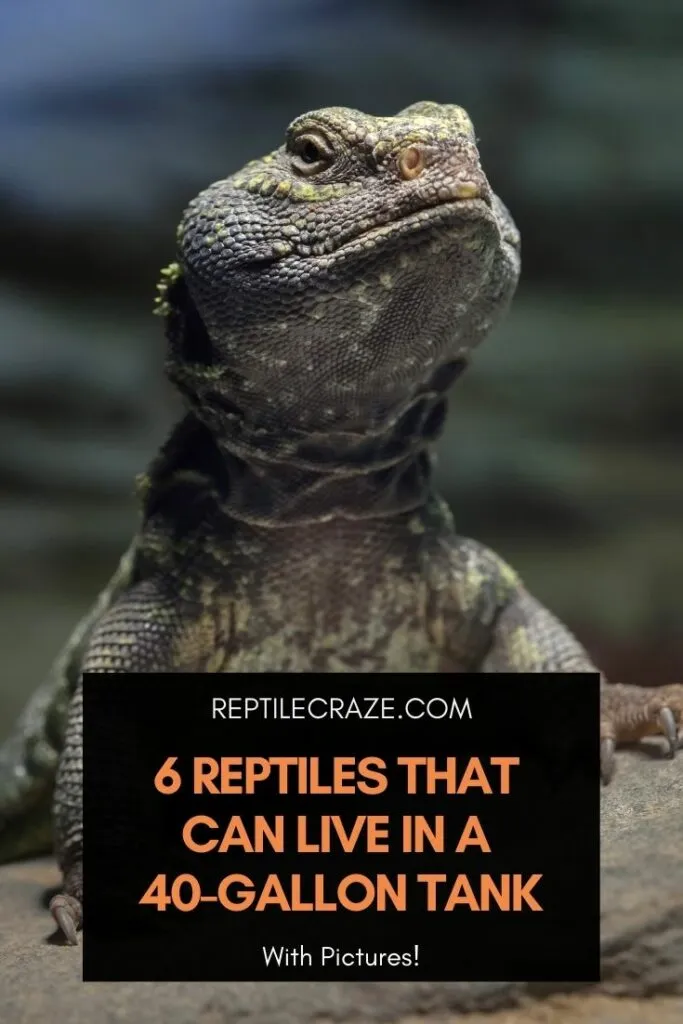
40 gallons may not seem like a lot of room, but you may be amazed by just how many different species can be happily accommodated in a
Whether you want a very active pet that you can watch run around the space or you prefer a reptile that can easily be handled, you have plenty of choices.
Some of the best options for a 40-gallon
Wondering what’s your best pick for a 40-gallon
Table of Contents
1. Blue-Tongued Skink
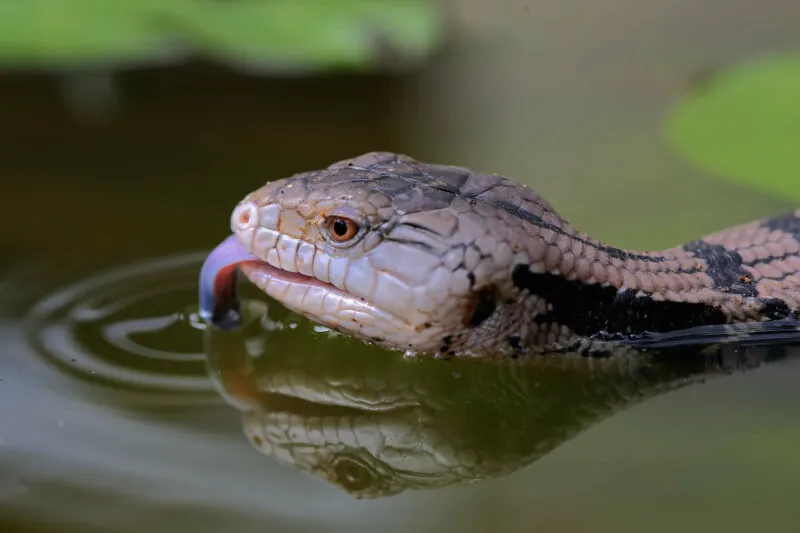
The blue-tongued skink is a fascinating little lizard with plenty of personality. There are a couple of species of blue-tongued skink to choose from, including the northern blue-tongued skink and the Indonesian blue-tongued skink.
Northern skinks are a bit hardier on average. You can choose from a standard color variety or a rare morph.
This is a long-lived skink that can be with you for 15 to 20 years or longer when cared for correctly. The northern blue-tongued skink can grow to be between 18 and 24 inches in length.
However, they are not extremely active and will do absolutely fine in a 40-gallon
These terrestrial lizards prefer floor space, so choose a terrarium that is long rather than tall. It is possible to keep females together or keep a pair, but you may find it safer to keep an individual alone.
If keeping more than one skink in the same enclosure, watch carefully for signs of fighting.
These skinks do well with a temperature gradient ranging from 75 to 82 degrees from one side of the
The warm end should also have a basking area that is between 90 and 100 degrees. While it may not be necessary for these skinks to have full-spectrum lighting, it is beneficial to them.
These hardy lizards can eat a wide range of foods. They are omnivores that do well with a combination of insects, vegetables and greens, and fruits. They are one of the few reptiles you can choose that can do very well even without access to live insects.
They can eat very high-quality dog or cat
Pretty much any kind of fruit and vegetable is acceptable to them, but make sure it is free of pesticides.
Wanna get a blue tongue skink? Make sure to read our blue tongue skink care guide here!
Here’s a blue-tongued skink enjoying a very natural enclosure:
2. Corn Snake
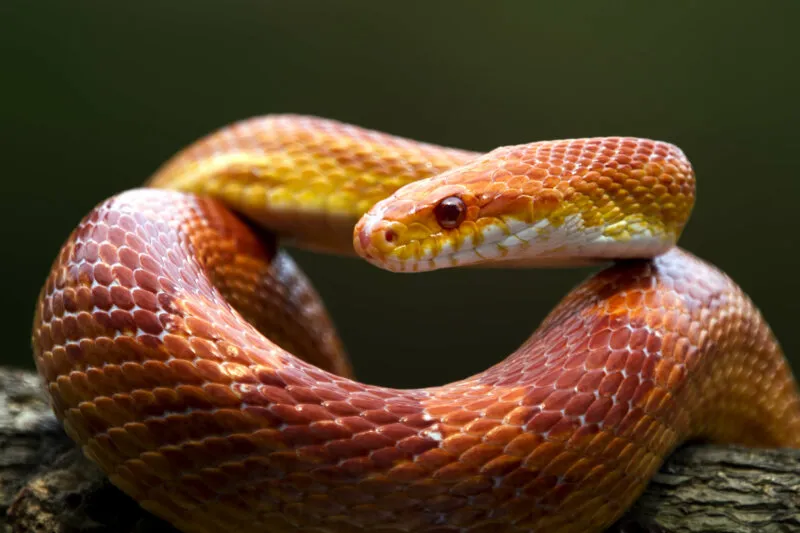
If you want a big, interesting snake with bright colors that is relatively easy to care for and only needs a 40-gallon terrarium, the corn snake may be the right snake for you.
This common snake is one of the most popular in the pet trade, but don’t assume that its availability makes them uninteresting.
Corn snakes come in one of the widest ranges of color and pattern morphs of any type of snake.
They grow surprisingly large, up to 5 feet, and generally accept handling without any trouble at all, which means that this is a snake that you can take out and handle without having to devote a lot of room to its terrarium.
These long-lived snakes can live up to 20 years if cared for properly, and they are very easy to breed.
They don’t need any kind of special lighting, although being in a room where natural light comes in will help them to have day and night cycles as well as seasonal cycles.
Their terrarium should have a gradient from the low 70s to about 85 degrees.
Corn snakes are generally pretty happy in either fairly barebones or well-decorated natural terrariums, depending on your preferences.
However, you should make sure to provide a hide in the form of a hollow log or PVC pipe so that your corn snake will feel secure. Make sure to provide a hide box with increased humidity when your corn snake sheds.
Because corn snakes like to burrow, aspen shavings make good bedding. Corn snakes are happy to accept mice of an appropriate size every 5 to 7 days as babies and every 7 to 10 days as adults.
Most are happy to accept frozen mice that have been thawed.
Tip: Do you have other tanks you want to house reptiles in? Read the following articles:
- 9 Reptiles That Can Live In A 10-Gallon Tank!
- 9 Reptiles That Are Perfect for 20-Gallon Tanks!
- 14 Reptiles That Can Live In A 30-Gallon Tank
- 5 Reptiles That Can Live In A 5-Gallon Tank
- 9 Reptiles That Are Perfect For A 55-Gallon Tank
- 8 Awesome Reptiles For 75-Gallon Tanks
- 12 Reptiles That Can Live in A 100-Gallon Tank Forever
- 9 Reptiles That Are Great For 120-Gallon Tanks
3. Uromastyx (Spiny Tailed Lizard)
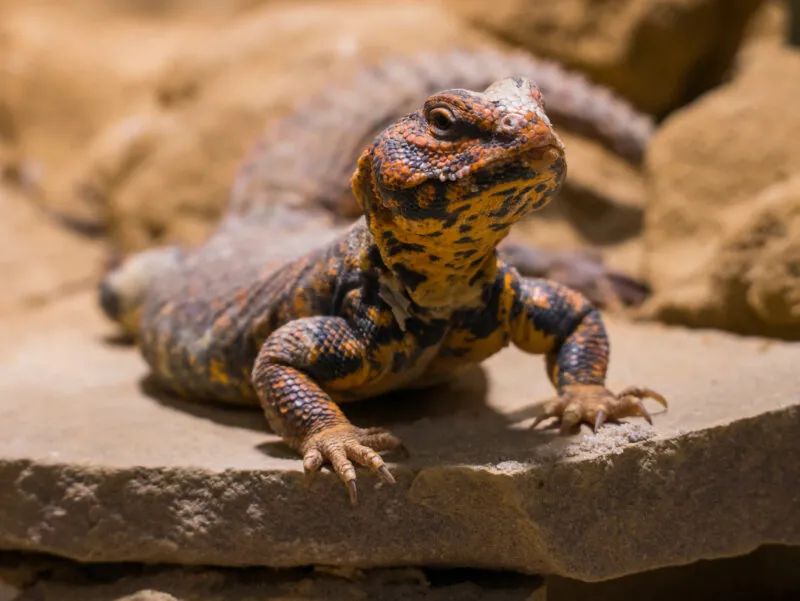
If you are looking for a unique lizard for your 40-gallon
There are around 18 different species, each of which has its own advantages and disadvantages when it comes to keeping them as pets. Most species grow to between 10 and 18 inches in length, and any of these species is a good option for a 40-gallon
These lizards are diurnal, which means that you can enjoy watching them throughout the day. They enjoy grazing on vegetation and digging, so a
It is best to light the
Most of the time it isn’t necessary to heat the terrarium at night. Enough substrate should be provided for your Uromastyx to borrow.
If you go with an enclosure that does not have substrate that can be borrowed in, providing hiding places is essential. This unusual reptile primarily eats green plants, which can be a huge advantage for many keepers.
They’ll enjoy a diet of dandelion greens, mustard greens, collard greens, spring mixes, and much more. Be careful with plants like kale and spinach which have oxalates that can block calcium absorption.
Chop up the plants and give them to your lizard in a shallow dish as though preparing a mixed salad. Grated carrots, sweet potatoes, and squash are also good options.
They also enjoy flower blossoms. Seeds and sprouted seeds are a wonderful choice too.
Interested in getting an uromastyx? We have created an uromastyx care guide to help you. Read it here!
Here’s a great enclosure for the uromastyx:
4. Gargoyle Gecko
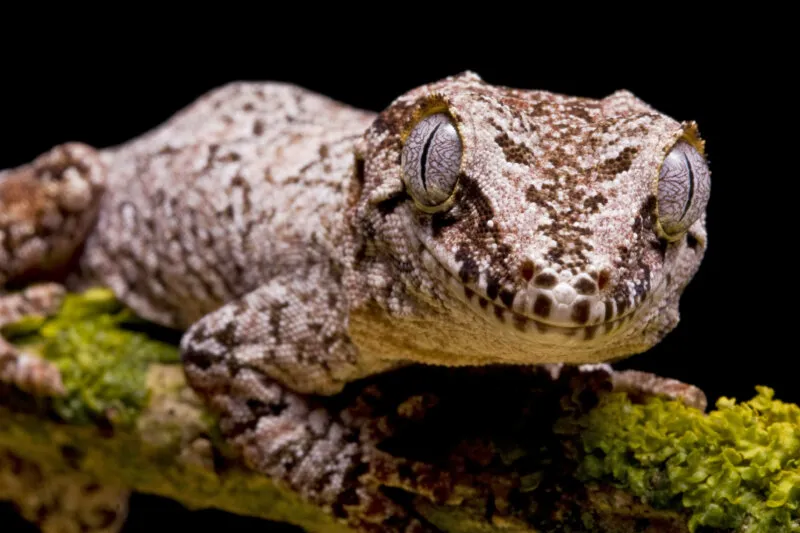
If you’re looking for a reptile that will does well in a 40-gallon tall
These geckos prefer to be up in the trees and do very well in terrariums with lots of live plants and plenty of vines. They only grow to be about eight inches total, which means that they can be a lot of fun to watch move around in your
In a 40
Tails can regenerate, but your geckos may be tailless for at least part of the year if kept in colonies. Males should never be housed together.
It’s best to keep the terrarium between 78 and 82 degrees and allow it to drop to the low 70s in the evening. In the winter, temperatures can drop into the 60s.
While gargoyle geckos don’t require UVB light as long as they have a vitamin D3 supplement in their diet, providing UVA and UVB light to keep plants alive is a great choice since it’s so fun to watch these geckos in a planted terrarium.
Because gargoyle geckos don’t spend much time on the substrate, you can use many different options. Have fun angling dried cork and wood branches along with plants throughout the height of the terrarium for them to climb.
Gargoyle geckos don’t need live insects if they are fed a complete powdered diet like the crested gecko diet. Simply mix the powder with two parts water and offer in a shallow dish.
Baby foods including peach, banana, and chicken are all good options if you would rather not use the powdered diet. While live insects aren’t necessary, it can be a lot of fun to watch your gecko hunt for them.
Look how much this gargoyle gecko enjoys its prepared
5. Kenyan Sand Boa

The Kenyan sand boa is a unique little snake that is becoming increasingly popular because it stays relatively small, has interesting behavior, and is relatively easy to care for.
The wild color morph is quite attractive, but you can also find a wide variety of color variations.
These little boas only grow to be about 2 ft in length, with males being even smaller, generally only up to 20 in. This is a long-lived little snake, sometimes living more than 30 years in captivity.
You don’t really need a terrarium as large as 40 gallons to house these snakes, but they will appreciate the extra room and you can keep one male with one or two females.
Because these are terrestrial burrowing snakes, you’ll want a
Because they will burrow extensively, avoid any heavy rocks or wood pieces that could cave in on them and cause injury. They generally don’t seem interested in climbing, so a cage constructed of just substrate with a few light pieces of wood for decoration is generally sufficient.
Kenyan sand boas prefer a basking area of around 95 degrees and a cooler side of about eighty degrees. Allowing the enclosure to drop to the mid-70s at night is perfectly acceptable.
These boas generally do best with live pinky mice when they are young, but are happy to take thawed frozen mice when they get older. It’s best to offer
In order to avoid competition between cage mates, it’s a good idea to feed them separately.
6. Veiled Chameleon
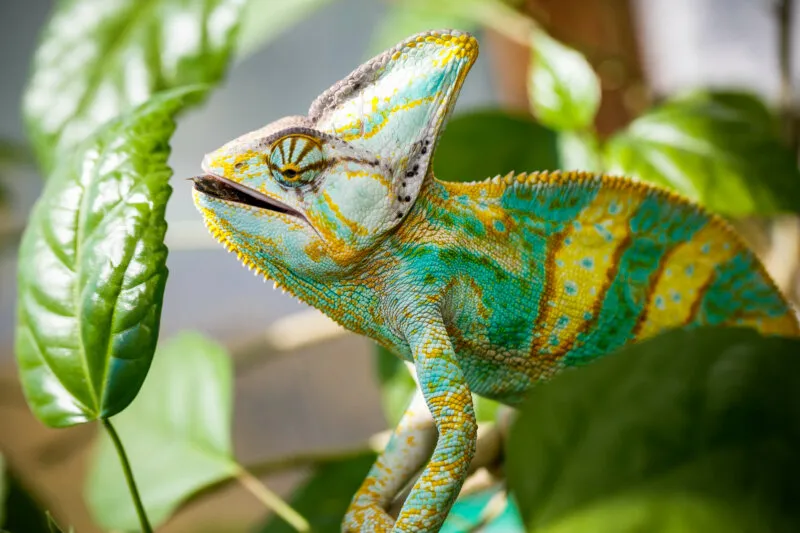
Do you want a truly striking inhabitant for your 40-gallon
However, if you are setting up an enclosure specifically for the reptile you want and need an enclosure that can occupy the same space as 40 gallons, you can easily set up a screen enclosure for your chameleon that takes up about this amount of room.
Veiled chameleons are among the hardiest of the chameleon species and are a good choice if this is your first chameleon. Captive breeding has made the veiled chameleon much hardier in captivity than the wild-caught specimens that were once available.
Although these lizards get quite big, as big as two feet when fully grown, they move slowly and have relatively little requirements when it comes to size, so they’ll do just fine in a cage of about 40 gallons.
They do best when kept alone. Veiled Chameleons thrive in a heavily planted terrarium that is tall rather than wide.
It’s a good idea to keep moving up in size as your chameleon grows. Veiled chameleons need a basking light that maintains an area of between 85 and 95 degrees and they want ambient temperatures in the rest of the cage between 72 and 80 degrees.
A nighttime drop is a good idea provided it does not go below the mid-forties.
Chameleons do best on live
Interested in getting a veiled chameleon? Read our veiled chameleon care guide to learn everything you need to know to take proper care of these beautiful chameleons!
Here is a veiled chameleon in a gorgeous planted terrarium:
Tips for Establishing Your Terrarium
Build the Enclosure for Your Species of Choice
Know what you are going to put in your terrarium before you begin getting it set up and well before you bring home your new pet.
Does the animal you want to keep prefer more space on the ground or in the air for climbing?
Do they need high humidity, great airflow, or a desert-like environment?
If you will be planting a naturalistic enclosure with live plants and an insect clean-up crew, you will want to give it some time to become established and cycle before adding a reptile.
Monitor Temperature And Humidity
You should have thermometers in the warm and cool sides of the enclosure. For reptiles that have specific humidity needs, setting up a humidity monitoring device is also a very good idea.
If you have areas that are supposed to maintain a higher humidity, such as a shedding hide, be sure to check it regularly before you bring home your pet to make sure it is maintaining humidity as it should.
Know What Goes Into the Terrarium
If you’ll be feeding live foods, pay careful attention to how many insects are added and make sure that your reptile eats all of them.
Allowing insects to live in the terrarium can result in a mess as insects produce waste, chew on plants, and die. Furthermore, some insects may chew on some reptiles. Many people find that feeding live insects in a separate enclosure is a safer option.
Enjoy Your 40-Gallon Tank
If you only have room for a 40-gallon enclosure, you may be amazed by the sort of interesting reptiles that you can keep. Skinks, geckos, snakes, and chameleons can all live happily in an enclosure of this size.
Be sure that you adjust the terrarium to match the specific needs of your reptile, and you’ll likely be very happy with the results.
- Enchi Ball Python: A Unique and Stunning Morph of Python regius - March 27, 2025
- Emerald Tree Monitor: The Enigmatic Green Guardian of the Rainforest - March 26, 2025
- The Egyptian Cobra (Naja haje): A Fascinating Serpent - March 25, 2025
